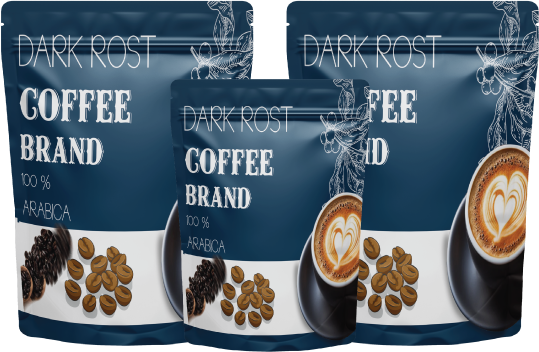It plays a crucial role in the coffee industry, ensuring that the delicate flavors and aromas of coffee beans or ground coffee are preserved from the moment they are roasted to the time they are brewed. These specialized bags are meticulously designed to protect coffee from its main enemies: oxygen, moisture, light, and heat. The Coffee Packaging Bag should keep the coffee fresh and aromatic.
Importance of Coffee Packaging
The journey of coffee from bean to cup is a complex one, and proper packaging is essential to ensure that consumers experience the full flavor and freshness that coffee has to offer..Packaging serves several critical functions in preserving coffee quality:
Preservation of Freshness:
Oxygen is one of the primary culprits in causing coffee to go stale. Properly designed coffee bags include barriers that prevent oxygen from entering and reacting with the coffee. This helps to maintain freshness and ensures that consumers enjoy coffee at its peak flavor.
Protection from Moisture:
Moisture can lead to mold growth and deterioration of coffee quality. these materials are chosen to have low moisture permeability, reducing the risk of moisture ingress and maintaining optimal coffee conditions.
Barrier Against Light:
Exposure to light, especially UV light, can accelerate the degradation of coffee oils and flavor compounds. Coffee bags are often designed to be opaque or include UV-resistant layers to protect coffee from light exposure.
Materials Used in Coffee Packaging
They are typically made from multi-layer materials that offer a combination of strength, barrier properties, and flexibility. The choice of materials depends on factors such as the type of coffee (beans or ground), desired shelf life, and environmental considerations. Common materials used in coffee packaging include:
Foil:
Aluminum foil provides excellent barrier properties against oxygen, moisture, and light. It is often used as an inner layer in coffee bags to maintain freshness.
Plastics:
Various types of plastics, such as polyethylene (PE) and polypropylene (PP), are used in them for their durability and barrier properties. These plastics are often combined with other materials to enhance performance.
Paper:
Paper can be used as an outer layer in coffee bags for its printability and aesthetics. However, it is usually coated or laminated with other materials to improve barrier properties.
Recyclable Materials:
Some of them are designed to be recyclable, allowing consumers to dispose of it in recycling programs where facilities are available.
Design Features
Coffee bags come in various designs to cater to different types of coffee and consumer preferences. The design features of it include:
Bag Type:
Coffee bags can be flat bags, stand-up pouches, or gusseted bags. Stand-up pouches are popular for their ability to stand upright on store shelves and their resealable closures, which keep coffee fresh after opening.
Resealable Closures:
Many coffee bags include zip locks or other resealable closures to allow consumers to open and close the bag easily. This helps to maintain coffee freshness between uses and prevents spillage.
Degassing Valves:
One-way degassing valves are essential for coffee bags containing freshly roasted coffee beans. These valves allow carbon dioxide gas to escape without allowing oxygen to enter the bag, thus preserving coffee freshness.
Challenges in Coffee Packaging
Despite advancements in coffee packaging technology, several challenges remain:
Cost:
High-performance packaging materials and innovative designs can increase production costs, impacting product pricing and profitability.
Compatibility:
Ensuring that sustainable packaging materials are compatible with existing packaging machinery and processes can be a challenge for manufacturers.
Consumer Perception:
Educating consumers about the benefits of sustainable packaging and encouraging behavior change in disposal habits requires ongoing effort and communication.
Conclusion
Coffee packaging bags are not just containers; they are essential guardians of coffee quality, protecting it from degradation while enhancing shelf life and ensuring optimal freshness for consumers. The choice of materials, design features, and sustainability considerations reflect broader trends towards environmental responsibility and consumer demand for high-quality products. Canadian Packaging Companies offer innovative solutions for various industries, ensuring quality and sustainability.
FAQs
What are they made of?
They are typically made from multi-layered materials like foil, plastics, and sometimes paper, designed to preserve freshness and protect against external factors.
Why do coffee bags have degassing valves?
Degassing valves allow carbon dioxide to escape from freshly roasted coffee beans while preventing oxygen from entering, maintaining freshness and preventing package bloating.
Are they recyclable?
Some are recyclable, but it depends on the specific materials used and local recycling capabilities; check with your local recycling program.
Do they affect the taste of coffee?
Properly designed to protect against oxygen, moisture, and light, helping to preserve the taste, aroma, and freshness of coffee beans or grounds.
What is the purpose of resealable closures on coffee bags?
Resealable closures like zip locks on coffee bags allow consumers to open and close the bag easily, keeping coffee fresh between uses and preventing spills.



